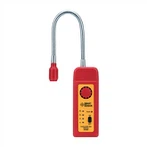Why use rosin for soldering_What is the use of rosin in the soldering process
what is rosin
Rosin refers to a non-volatile natural resin obtained from pine rosin through different processing methods. Rosin is an important chemical raw material, widely used in soap, paper, paint, rubber and other industries.
Rosin is often used as a tackifying resin in hot-melt, pressure-sensitive and solvent-based adhesives to increase initial tack and improve bond strength. Rosin can also improve the drying and peeling strength of water-based acrylic laminating adhesive, and the optimal dosage is 6% of the total amount of monomers. Rosin is a weakly acidic substance. If the amount of SBS type universal glue or spray glue is too large, the iron packaging will be corroded, and the glue will quickly turn brown-black. Although it does not affect the bonding performance, the appearance is not. Doubtful.
Rosin is very sensitive to light, heat, and oxygen, especially in powder form, so it is easy to oxidize, so it should be stored as a whole to prevent oxidation from darkening the color and changing performance. When the surface of block rosin is oxidized, an oxide film is formed to prevent further oxidation of internal rosin. Moisture can accelerate the oxidation process of rosin, and acetic acid is released during deep oxidation.
Why use rosin for soldering
1. Rosin is a flux. When the tip of the soldering iron taps the rosin, the rosin makes a "chuck" sound and emits a puff of white smoke, indicating that the temperature is right and it can be soldered. When in use, you can apply rosin to the solder joints and weldments (or tap it after hot), then touch the soldering iron tip, solder, and solder joints for 2-3 seconds, and remove the solder after the solder has melted evenly. Open the tip of the soldering iron to complete the soldering.
2. With rosin, it is easier to "eat tin", and the soldered spots are also brighter, and it is not easy to form a false weld.
3. Rosin prevents the oxidation of the weldment, first remove the oxide layer, and hang tin in the rosin. Put some rosin on the solder joints, hang tin in the rosin, and then solder.
4. Use fine sandpaper to wipe off the oxide layer of the copper wire, bury (put) it in rosin, put a large tin ball (about the size of a match head) on the soldering iron, put it on the copper wire for about a second or two, lift the soldering iron and take it out line. Put some rosin on the circuit board. Put a small tin ball on the soldering iron and put it on the circuit board for about one or two seconds. Wait for more than 30 seconds to cool naturally, then put the wire on, and then relax the incense. Take a small solder ball on the soldering iron and solder it for about one or two seconds. Seconds, remove the soldering iron, hold the thread and wait for natural cooling for more than 3 seconds before letting go.










